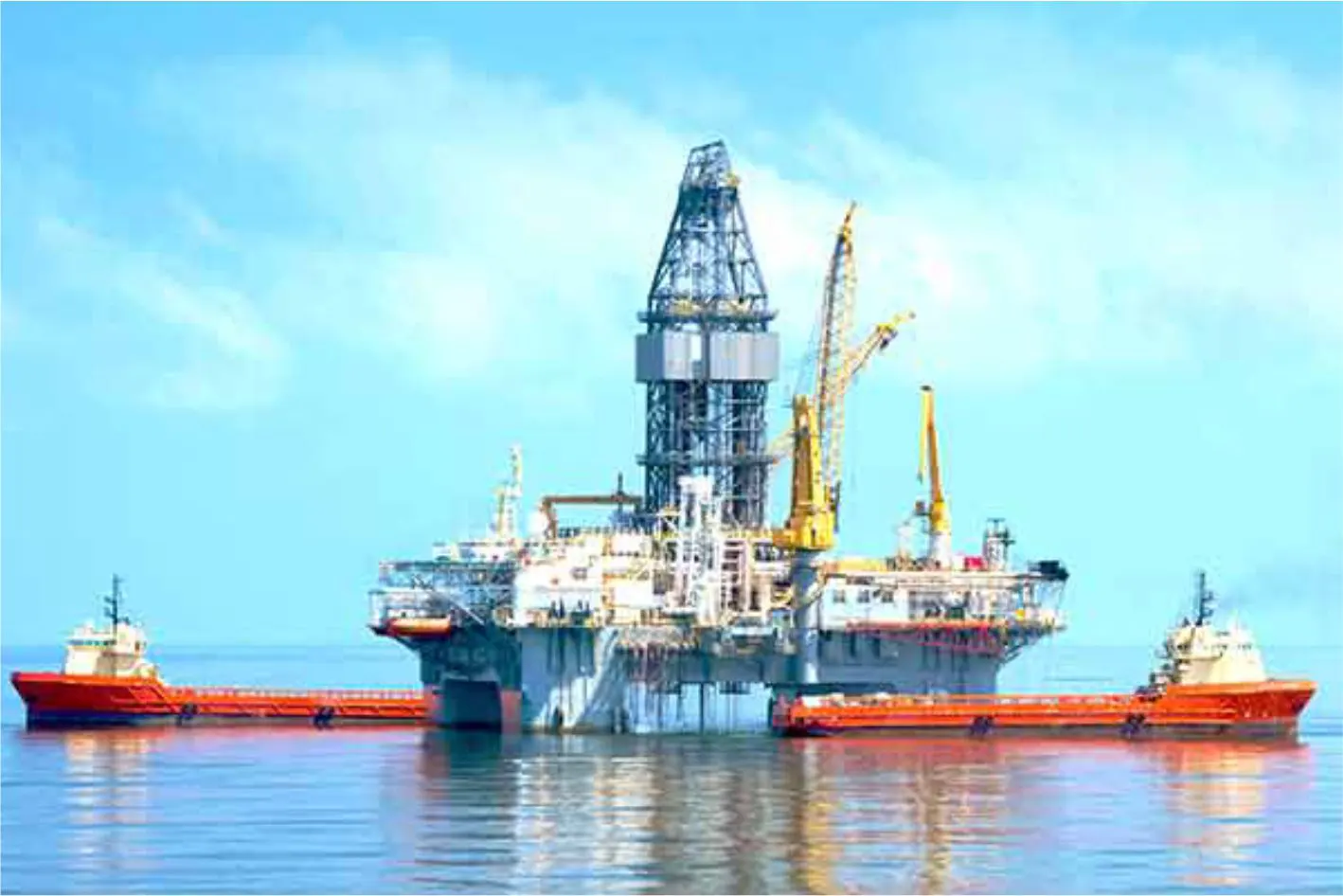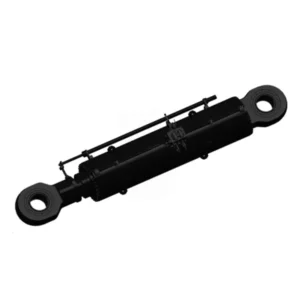Jack-up Offshore Platform Lifting Cylinder
Jack-up Offshore Platform Lifting Cylinder
The jack-up offshore platform lifting cylinder is a cutting-edge hydraulic system explicitly designed for offshore platforms. It is crucial in elevating and stabilizing media, ensuring safe and efficient operations in challenging offshore environments. With its advanced features and robust construction, this lifting cylinder is the go-to solution for offshore industries worldwide.
The jack-up offshore platform lifting cylinder is a reliable and efficient hydraulic system designed to elevate and stabilize offshore platforms. Its robust construction, high load capacity, and adjustable height capabilities ensure safe and seamless operations in challenging offshore environments. By following the recommended usage methods and implementing regular maintenance practices, operators can maximize the longevity and performance of this essential lifting solution, contributing to the success of offshore projects.
Jack-up Offshore Platform Lifting Cylinder Key Characteristics:
- Robust Construction: The lifting cylinder is built to withstand the harsh conditions of offshore environments. Constructed from high-quality, corrosion-resistant materials, it offers exceptional durability and longevity, minimizing maintenance requirements.
- High Load Capacity: The lifting cylinder boasts an impressive load capacity, allowing it to handle heavy loads with ease. It provides reliable support for the entire platform during elevation, ensuring stability and safety during operations.
- Hydraulic Power: Powered by a hydraulic system, the lifting cylinder utilizes the force generated by pressurized fluids to raise and lower the platform. This hydraulic mechanism offers precise control over the elevation process, ensuring smooth and controlled movements.
- Adjustable Height: The jack-up offshore platform lifting cylinder allows for adjustable platform height, accommodating varying water depths and sea conditions. This adaptability ensures optimal positioning of the platform, enhancing stability and facilitating efficient operations.
Jack-up Offshore Platform Lifting Cylinder Parameter:
| Product Name | Jack-up Offshore Platform Lifting Cylinder |
| Features: | Realize the lifting and lowering of the platform by driving the ring beam |
| Bore diameter: | Up to 700mm |
| Rod diameter: | Up to 420mm Stroke up to 2150mm |
| Pressure: | up to 32Mpa |
| Sensor: | An external displacement sensor can be configured to meet the needs of maintenance and replacement of the sensor without disassembling the cylinders |
| Applications: | Jack-up Offshore Platform |
Rod diameter: up to 420mm
Stroke up to 2150mm
Jack-up Offshore Platform Cylinder Application:

Usage Method Of Jack-up Offshore Platform Lifting Cylinder:
- Pre-Lift Preparation: Before initiating the lifting process, ensure the platform is securely positioned and all safety measures are in place. Conduct a thorough inspection of the lifting cylinder and associated components.
- Hydraulic System Activation: Activate the hydraulic system, ensuring proper pressure levels and fluid supply. This will provide the necessary force for the lifting cylinder to elevate the platform.
- Controlled Elevation: Engage the lifting cylinder, utilizing the hydraulic controls to gradually elevate the platform to the desired height. Monitor the process closely, ensuring smooth and controlled movements.
- Stabilization: Once the desired height is achieved, engage the platform stabilization mechanism, ensuring the platform remains secure and level during operations.
How To Remove Hydraulic Cylinder Pins?
Removing hydraulic cylinder pins requires careful handling and adherence to safety procedures. Here’s a step-by-step guide on how to remove hydraulic cylinder pins:
- Prepare the Work Area: Ensure you have a clean and well-lit workspace. Clear any obstructions around the hydraulic cylinder to allow easy access to the pin removal process.
- Release Pressure: Before attempting to remove the pins, relieve the hydraulic pressure in the system. This step is crucial to prevent sudden movement or unexpected release of stored energy. Follow the manufacturer’s instructions for safely depressurizing the hydraulic system.
- Identify Pin Types: Hydraulic cylinder pins can come in various types, such as clevis pins, cotter pins, or snap rings. Identify the specific type of pin used in your hydraulic cylinder to determine the appropriate removal method.
- Gather Tools: Depending on the pin type, you may need specific tools for removal. Common tools include a hammer, punch, pliers, or a pin removal tool designed for hydraulic cylinders.
- Remove Retaining Hardware: If the pin is secured with retaining hardware, such as cotter pins or snap rings, carefully remove them using the appropriate tools. Take care not to damage the surrounding components.
- Apply Penetrating Oil (If Needed): If the pin seems stuck or resistant to movement, applying a penetrating oil can help loosen any rust or debris. Allow the oil to penetrate for a few minutes to facilitate easier removal.
- Tap the Pin: Using a hammer and a punch or a pin removal tool, gently tap the pin from the opposite side of the retaining hardware. Start with light taps to avoid damage and gradually increase force if necessary. The goal is to dislodge the pin without causing excessive force.
- Wiggle and Pull: Once the pin starts to move, wiggle it back and forth while applying outward pressure to remove it from the hydraulic cylinder. Be patient and avoid using excessive force, as this can lead to damage or injury.
- Inspect the Pin: After removal, inspect the pin for any signs of damage or wear. If the pin is damaged, replace it with a new one before reassembling the hydraulic cylinder.
- Clean and Lubricate: Thoroughly clean the pin and the pinholes in the hydraulic cylinder. Remove any debris, rust, or old lubricant. Apply a suitable lubricant to the pin before reinstallation to ensure smooth operation.
工厂的能力和产能:
(1) 装配
我们拥有一流的自主研发装配平台。液压油缸生产车间拥有 4 条半自动提升油缸装配线和 1 条全自动倾斜油缸装配线,设计年生产能力 100 万支。特种油缸车间配备了各种规格的半自动清洗装配系统,设计年生产能力 20 万只,并配备了知名数控加工设备、加工中心、高精度油缸加工专用设备、机器人焊接机、自动清洗机、油缸自动装配机、自动喷漆生产线等。现有关键设备 300 多台(套)。设备资源的优化配置和高效利用,保证了产品的精度要求,满足了产品的高质量需求。


(2) 机加工
加工车间配备了定制的斜轨车削中心、加工中心、高速珩磨机、焊接机器人及其他相关设备,可加工最大内径 400 毫米、最大长度 6 米的气缸管。

(3) 焊接

(4) 油漆和涂料
配备中小型圆筒自动水性漆喷涂线,实现机器人自动上下料和自动喷涂,设计产能为每班 4000 件;
我们还拥有一条由动力链驱动的大型油缸半自动喷漆生产线,设计产能为每班 60 箱。


(5) 测试
我们拥有一流的检验设施和试验台,确保气缸的性能符合要求。

We are one of the best hydraulic cylinder manufacturers. We can offer comprehensive hydraulic cylinders. We also provide corresponding 农用齿轮箱. We have exported our products to clients worldwide and earned a good reputation because of our superior product quality and after-sales service. We welcome customers at home and abroad to contact us to negotiate business, exchange information, and 与我们合作!
参观我们的 VR 工厂
通过以下方式参观我们的 VR 工厂
叉车液压缸如何工作?
液压缸应用:



